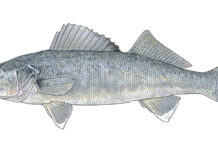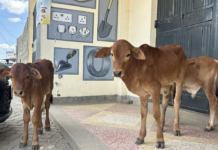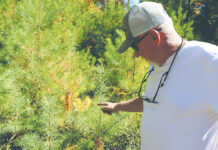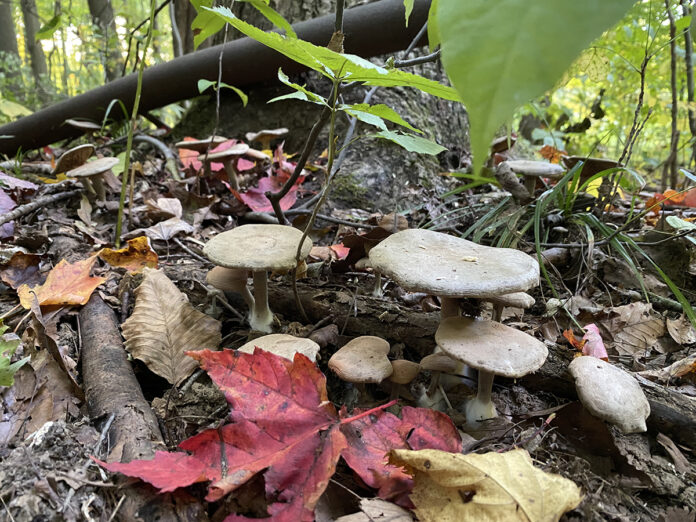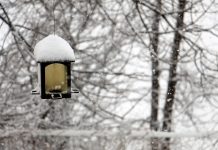Spring foraging season is right around the corner. Ramps and morels will be heavily sought after by plenty of eager foragers, along with a cornucopia of other wild foods.
Foraging is a fun springtime activity, but foragers need to be aware not all soils are created equally. Soils near urban areas, industrial facilities, infrastructure and other heavily contaminated sites can contain a variety of pollutants.
Plants are incredibly efficient at absorbing contaminants and removing them from the soil. Their roots collect and soak up pollutants the same way they take in nutrients, leaving the soil cleaner with each succeeding generation.
Incidentally, plants growing in contaminated soil will contain the same contaminants as the soil. These plants should not be collected or consumed.
Fungi are also remarkably adept at absorbing and breaking down chemical pollutants. Like plants, they should not be collected and consumed in areas with contaminated soil.
Foragers need to beware of the dangers of collecting from or near contaminated sites and avoid them entirely. Even when foraging in an area removed from obvious contamination, it’s wise to be on the lookout for signs of pollution in areas around agricultural fields, near waterways, along roadways and railroad tracks and under powerlines. Being in a rural area, seemingly surrounded by nature, doesn’t always mean the environment is free of contaminants.
Learn how to assess the natural environment around you and look for signs of pollution before foraging.
How to avoid foraging in polluted locations
The extent of contamination in an area may be apparent in the appearance of the ecosystem you’re foraging from or it may not. However, there are ways to estimate the risk of contamination before choosing a location.
Know the history of a chosen foraging location. Knowing the history of an area before planning a foraging trip can help you determine the potential level of contamination. If you’re foraging on private property, speaking to the landowner beforehand can help determine the health of the plants and fungi on the land. If you’re foraging on public land, you can search through public records, including news reports and press releases from government agencies such as the Environmental Protection Agency and Ohio Department of Natural Resources, for instances of heavy pollution in the area and ongoing conservation initiatives to improve the area.
- What was the land previously used for?
- How long ago was it reclaimed, if it has been reclaimed?
- What else is in the area — factories, oil and gas wells, wastewater injection wells, utility lines, train tracks, roadways, crop fields, manure retention ponds, etc?
- Have there been any recorded incidents of chemical spills, algal blooms or other instances of heavy pollution in the area?
- Are the waterways that drain into or near the area relatively healthy? Have they been exposed to contaminants that may be draining into the area?
Be familiar with known forms of pollution. Any number of factors could affect the quality and consumability of plants in an area. However, there are some known forms of pollution to watch for depending on where you’re foraging.
- Urban pollution. Industrialized urban areas can contain a wide range of heavily concentrated contaminants, including lead and arsenic. Any plant that is consumed for its mineral content, such as dock, lamb’s quarters and nettle, can absorb and store heavy metals. Urban areas to avoid include:
- Brownfields – zones of heavily polluted areas as designated by the Environmental Protection Agency
- Old refuse and landfill sites
- Railroad tracks and rail yards – be especially wary of arsenic here
- Highways
- Old gas station sites
- Suburban pollution. The most common types of pollution in suburban areas are lead, pesticides and herbicides. Pesticides and herbicides may be present in and around lawns, golf courses, roadsides and corporate landscapes. Lead can be present in the soil when paint chips from older homes and building exteriors flake off and accumulate.
- Agricultural pollution. Pollution isn’t only present in urban and suburban areas, rural soils can contain contaminants, as well. Soils around farms can contain excess nitrates, fertilizers and manure runoff. Waterways around farms and feedlots can also become contaminated by runoff, affecting plants that grow in wetlands and riverbeds that are downstream. Herbicides and pesticides that have been used to protect crops can also be present on surrounding flora.
- Corporate pollution. Avoid foraging anywhere near pharmaceutical companies, manufacturing complexes, paint companies and furniture companies. A higher potential for heavy metal contamination and other forms of environmental pollution exists around these types of facilities.
- Municipal pollution. Sewage overflow at water treatment facilities can contribute to E. coli and Salmonella concentrations in nearby soils and waterways. Power facilities may dump residual byproducts, such as grey water, into nearby waterways.
- Public easement pollution. Herbicides are frequently used to maintain clear paths to power lines and other municipal services. Typically, all the plants in the treatment zone die and it appears brown.
- Roadway pollution. Salt, bromide and fracking wastewater are commonly used on icy winter roads as a deicer. When these chemicals are absorbed by surrounding plants, the plants appear burned and dead during the growing season.
- Pollution from irrigation. When grey water is used in irrigation, plants can become contaminated with pathogens such as E. coli and Salmonella. Washing plants in water can’t eliminate them.
Recognize the telltale signs of a polluted environment. Even if you avoid areas with a history of heavy pollution and areas with known forms of pollution, you should still be wary of signs of a polluted environment. Trust your senses.
- Sight. Observe your environment and look for signs of litter. Take note of the appearance of the plants and wildlife you come across. Unhealthy plants will appear weak and spindly. Unhealthy wildlife may present a number of red flags. Hair loss, disoriented behavior and a thin or weak appearance are some warning signs. A total lack of wildlife in an area is another warning sign. If there’s a water source nearby, check the appearance of the water. Clear water, teeming with aquatic plant and animal life is healthy. Water that appears murky or oily, abundant algae growth and sudsy foam are signs of water pollution.
- Smell. Foul smells can alert you to pollution — a rotten egg smell is added to natural gas to make leaks detectable, oil has a distinct smell and manure has a pungent odor. Water can also smell foul when it’s been exposed to pollution, however, it can also have a soapy or perfumy smell. Smells that don’t smell earthy and natural should be a warning.
- Hear. You may not always be able to see sources of pollution that you can hear. Foraging in the woods can keep you covered from a nearby highline corridor, but you can hear the buzzing. You also might hear a tractor running on a nearby field, cars driving down an adjacent highway, a derrick pumping oil or a train rumbling down tracks just beyond the trees.
- Feel. In addition to a weak appearance, plants that have been stressed or exposed to pollution may feel more brittle. They may also produce smaller, less supple fruit. If what you’re foraging doesn’t feel healthy, leave it alone. You should also be cautious when water temperatures are warmer. Chemical reactions increase at higher temperatures.
- Taste. Don’t taste anything unless you’ve investigated and deemed the location you’ve selected healthy.
Related Content
Resources
- Midwest Medicinal Plants by Lisa M. Rose – find this book at an independent bookstore near you — https://www.indiebound.org/book/9781604696554


